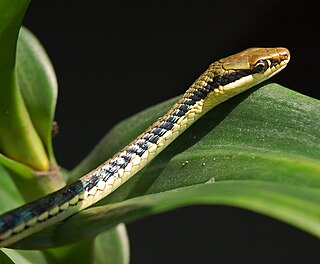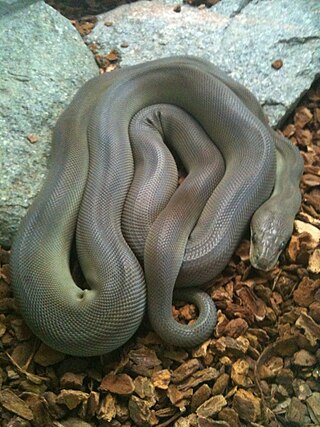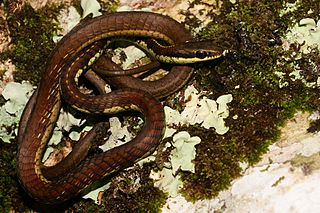
The fauna of Australia consists of a large variety of animals; some 46% of birds, 69% of mammals, 94% of amphibians, and 93% of reptiles that inhabit the continent are endemic to it. This high level of endemism can be attributed to the continent's long geographic isolation, tectonic stability, and the effects of a unique pattern of climate change on the soil and flora over geological time. A unique feature of Australia's fauna is the relative scarcity of native placental mammals. Consequently, the marsupials – a group of mammals that raise their young in a pouch, including the macropods, possums and dasyuromorphs – occupy many of the ecological niches placental animals occupy elsewhere in the world. Australia is home to two of the five known extant species of monotremes and has numerous venomous species, which include the platypus, spiders, scorpions, octopus, jellyfish, molluscs, stonefish, and stingrays. Uniquely, Australia has more venomous than non-venomous species of snakes.

The smooth green snake is a species of North American nonvenomous snake in the family Colubridae. The species is also referred to as the grass snake. It is a slender, "small medium" snake that measures 36–51 cm (14–20 in) as an adult. It gets its common name from its smooth dorsal scales, as opposed to the rough green snake, which has keeled dorsal scales. The smooth green snake is found in marshes, meadows, open woods, and along stream edges, and is native to regions of Canada, the United States, and northern Mexico. A non-aggressive snake, it seldom bites and usually flees when threatened. It mates in late spring to summer, and females lay their eggs from June to September. The smooth green snake will often bob its head in order to mimic vegetation blowing in the wind.

The green tree python, also known as the emerald green python, is a species of snake in the family Pythonidae. The species is native to New Guinea, some islands in Indonesia, and the Cape York Peninsula in Australia. First described by Hermann Schlegel in 1872, it was known for many years as Chondropython viridis. As its common name suggests, it is a bright green snake that can reach a total length of 2 m (6.6 ft) and a weight of 1.6 kg (3.5 lb), with females slightly larger and heavier than males. Living generally in trees, the green tree python mainly hunts and eats small reptiles and mammals. It is a popular pet, and numbers in the wild have suffered with large-scale smuggling of wild-caught green tree pythons in Indonesia. Despite this, the green tree python is rated as least concern on the IUCN Red List of endangered species.

Morelia spilota, commonly known as the carpet python, is a large snake of the family Pythonidae found in Australia, New Guinea, Bismarck Archipelago, and the northern Solomon Islands. Many subspecies are recognised; ITIS lists six, the Reptile Database six, and the IUCN eight.

The brown tree snake, also known as the brown catsnake, is an arboreal rear-fanged colubrid snake native to eastern and northern coastal Australia, eastern Indonesia, Papua New Guinea, and many islands in northwestern Melanesia. The snake is slender, in order to facilitate climbing, and can reach up to 2 meters in length. Its coloration may also vary, some being brown, green, or even red. Brown tree snakes prey on many things, ranging from invertebrates to birds, and even some smaller mammals. It is one of the very few colubrids found in Australia, where elapids are more common. Due to an accidental introduction after the events of World War II, this snake is now infamous for being an invasive species responsible for extirpating the majority of the native bird population in Guam. Currently, efforts are being made to reduce and control the population on Guam and prevent the snake from spreading to other locations.

Children's python is a species of nonvenomous snake in the family Pythonidae. The species is named after John George Children. It is a nocturnal species occurring in the northern half of Australia and generally found on the ground, although it often climbs trees. Usually growing to about 1.0 m (3 ft) in length or more depending on the polymorphic variant, it is typically a reddish-brown colour, darker on the upper surface, and with many darker blotches, especially on younger specimens. The Stimson's python variant has much stronger and more variable colours; often being adorned with reddish-brown to chocolate blotches against lighter tan. It feeds mostly on small mammals and birds, and as with other pythons, it constricts its prey before swallowing it whole. It is a popular pet among reptile enthusiasts.
Dendrelaphis biloreatus is a species of tree snake in the family Colubridae. The species is endemic to Asia.

Dendrelaphis humayuni, also known commonly as the Nicobar bronzeback or Tiwari's bronzeback, is a species of snake in the family Colubridae. The species is endemic to the Nicobar Islands of India.

Dendrelaphis pictus, the common bronzeback, painted bronzeback, or Indonesian bronzeback, is a species of snake found in Southeast Asia and India.

The white-lipped tree frog is a species of frog in the subfamily Pelodryadinae. It is the world's largest tree frog and is found in Australia. Other common names include the New Guinea treefrog, giant tree frog, and Australian giant treefrog.

Opheodrys aestivus, commonly known as the rough green snake, is a nonvenomous North American colubrid. It is sometimes called grass snake or green grass snake, but these names are more commonly applied to the smooth green snake. The European colubrid called grass snake is unrelated. The rough green snake is docile, often allowing close approach by humans, and seldom bites. Even when bites occur, they have no venom and are harmless.

Dendrelaphis is a genus of colubrid snakes, distributed from Pakistan, India and southern China to Indonesia, Timor-Leste, the Philippines, Australia, New Guinea and the Solomon Islands. There are over forty described species. Asian species are known commonly as bronzebacks, while the Australo-Papuan species are simply called treesnakes. All are non-venomous and entirely harmless to humans.
Green tree snake may refer to either of the following non-venomous snakes:

The olive python is a species of snake in the family Pythonidae. The species is endemic to Australia. Two subspecies are recognized, including the nominate subspecies described here.

Pseudonaja nuchalis, the northern brown snake or gwardar, is a species of very fast, highly venomous elapid snake native to Australia. Its colour and pattern are rather variable, depending largely on its location.

Dendrelaphis calligaster, also called green tree snake and northern tree snake, is a colubrid snake native to Indonesia, Papua New Guinea and Australia. It is a slender, large-eyed, non-venomous, diurnal snake, which grows up to 1.2 m in length and is greenish, brown, or greyish above with a cream or yellow belly.

Ashok Captain is an Indian herpetologist who has authored books and papers on Indian snakes. He was also a competing cyclist from 1977 to 1989.

Dendrelaphis schokari, also known as the common bronze-back or Schokar's bronzeback, is a species of non-venomous arboreal snake in the family Colubridae. The species is endemic to Sri Lanka.

Dendrelaphis haasi, also known commonly as Haas' bronzeback, Haas's bronzeback, Haas's bronzeback snake, and Haas's bronzeback tree snake, is a species of snake in the family Colubridae. The species is native to Southeast Asia.
Dendrelaphis ngansonensis, the Nganson bronzeback or Nganson bronzeback tree snake, is a species of snake in the family Colubridae. The species is found in Vietnam, Laos, Thailand, Cambodia, and southwestern China (Yunnan).






















